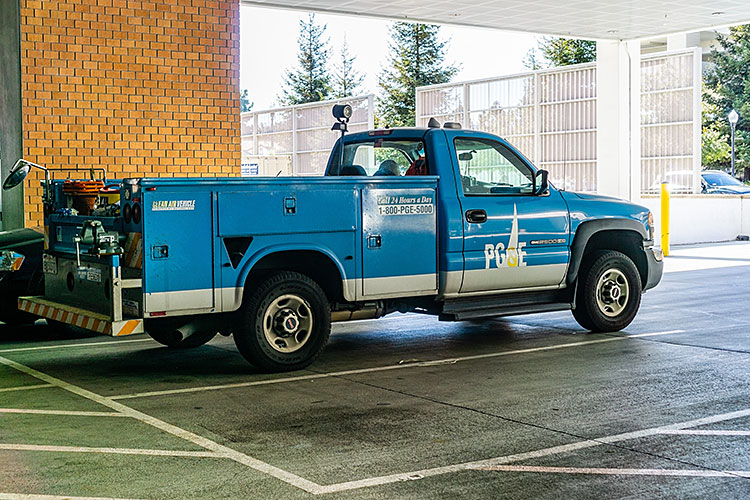Editor’s note: On Sept 28, as a result of Fifth District Supervisor Bruce McPherson and Second District Supervisor Zach Friend providing the following information, the Board of Supervisors direct Chairman McPherson to send a letter to the California Public Utilities Commission requesting an investigation of repeated and unpredictable Pacific Gas & Electric “fast trip” power outages this summer in Santa Cruz County, which have left thousands of residents in the dark in Aptos, Corralitos, greater Watsonville, and the Santa Cruz Mountains, disrupting their lives and business operations and impacting their health and well-being.
•••
Power outages related to the fast trip settings began in July 2021 and have continued unabated as of this writing. For example, on Sept. 20, an outage impacted more than 5,600 customers in the San Lorenzo Valley, including local schools, after a squirrel came in contact with a transformer.
 Such outages demonstrate that the overly sensitive fast trip setting, which is ostensibly designed to reduce the risk of PG&E equipment causing a wildfire, is otherwise causing harm to residents by unnecessarily cutting power to large swaths of our area.
Such outages demonstrate that the overly sensitive fast trip setting, which is ostensibly designed to reduce the risk of PG&E equipment causing a wildfire, is otherwise causing harm to residents by unnecessarily cutting power to large swaths of our area.
While the fast trip setting immediately shuts down power, it can take a significant amount of time to restore power as PG&E crews must then visually inspect the affected lines, which can only happen during daylight hours. Many of the outages have taken hours or days to restore, often to be replaced with another outage just days later.
The County’s Office of Response, Recovery and Resilience has asked PG&E for data on the number of fast trip outages in Santa Cruz County since July 1, as well as the number of total service hours lost to constituents. OR3 has also requested data on the frequency of outages per week between July 1 and the week of Sept. 20, and the average time of outage per event.
It is hoped that PG&E will provide this information, as well as details of their efforts to fix the fast trip setting, in community meetings scheduled for Sept. 23.
Analysis
We understand that the fast trip sensors are a response to the justified pressure PG&E is receiving for their equipment triggering fires throughout our state, causing the loss of life and structures.
 For many years, residents and elected officials in our County and elsewhere have been calling on PG&E to invest in hardening its system in high fire danger areas rather than focus on extreme vegetation management and increasing power shutoffs.
For many years, residents and elected officials in our County and elsewhere have been calling on PG&E to invest in hardening its system in high fire danger areas rather than focus on extreme vegetation management and increasing power shutoffs.
While we support efforts to improve safety, it is hard to believe this fast trip approach (and the extreme sensitivity that triggers shutoffs) is anything other than an overcorrection.
We would instead encourage PG&E to prioritize hardening the lines in these areas, including undergrounding. Basically, PG&E is telling their customers that they can choose safety or reliable power but not both.
The outages are more than just an inconvenience; they are a life safety and health issue. Without power, residents who rely on wells can’t pump water or use their sanitation systems.
Losing power has a profound impact on seniors and others who need reliable power service for medical equipment. Students and workers cannot study or work from home without power and Internet access. Businesses struggle to operate without power, thus causing the loss of revenue that keeps people employed.
The outages compound trauma already experienced by many residents. Some of the areas that have suffered outages were heavily impacted by the CZU Lightning Complex Fire in 2020, and others from previous storm-related events.
These same areas were hit with PG&E’s Public Safety Power Shutoffs (PSPS) events in recent years, and we can only assume these areas will continue to be impacted by future PSPS events and these fast trip shutoffs.
To make matters worse, PG&E’s leadership has failed to adequately communicate with residents about what is happening. Only after more than six weeks of our repeated requests to host a community meeting with residents did the utility finally agree to host meetings on the afternoon and evening of Sept. 23.
This delay in response signaled once more that PG&E leadership clearly does not prioritize communication with their customers.
We believe it’s important to elevate the voice of these residents to the CPUC, which has regulatory authority over PG&E and needs to take a closer look at what is driving the decision-making around wildfire safety and prevention.
Our request for a CPUC investigation into the fast trip approach is separate from — and in addition to — the pending formal complaint our County filed with the CPUC against PG&E related to the post-CZU Fire tree removal in 2020 that garnered multiple notices of violation by CALFIRE, the California Coastal Commission and other agencies.
•••
http://www.co.santa-cruz.ca.us/government/boardofsupervisors.aspx
